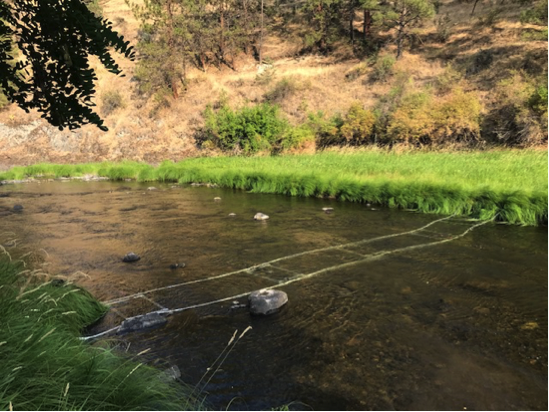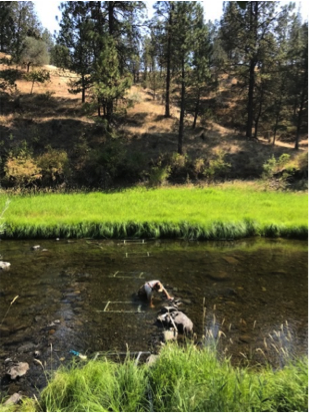|
By Evan Booher In August, 2020 ODFW staff installed a new type of fish detection antenna at a site on the Middle Fork John Day River (MFJDR) near Ritter, OR. These new antennas, designed by ODFW employees, are made of loops of low-power electrical wire encased in PEX plumbing tubing. Their low profile will enhance their durability during flood and ice events that often damage previous designs. The antennas detect fish that were tagged with passive integrated transponder (PIT), radio frequency tags when they were either juveniles in the river or as adults at Columbia River Dams. This detection site will provide valuable information for counting and estimating survival of salmon and steelhead benefitting from the restoration work being implemented in the John Day River. This site is also part of the Middle Fork John Day River, Intensively Monitored Watershed (IMW) and complements other data being collected to monitor salmon and steelhead. Multiple interrogation sites will allow managers to estimate the return of adult chinook and steelhead prior to spawning and estimates derived from these monitoring efforts provide real information for tracking the recovery of these populations. Patterns in the movement and survival of threatened salmon and steelhead stocks are essential information for their management in Oregon watersheds. PIT tags are widely used throughout the Columbia River basin to assess these population characteristics by multiple fishery agencies and these data are stored in a centralized database: the PIT Tag Information system (PTAGIS). Detections of PIT-tagged fish at Columbia River dams and throughout the Pacific Northwest, are used to monitor migrating salmon at multiple stages of their life cycle. This data is used as a standard for adult performance in NOAA’s Biological Opinion for the recovery of federally-listed salmon and steelhead in the Columbia and Snake River basins.
0 Comments
Leave a Reply. |
IMW News Updates
Archives
September 2022
Categories |


 RSS Feed
RSS Feed
